Local Artist Recreates Dream-Like Urban Scenes in Miniature 3D to Preserve a World He Both Loves
and Knows Never Existed
Story by Matthew St. Amand
Photography by Christopher McNamara
There is nothing more punk rock than finding beauty in the neglected, overlooked and under-appreciated aspects of daily life. One person’s blight is another’s shrine. Shrink the scale down to something safe and approachable, and the work becomes absolutely compelling.
For the past few years, Windsor multi-media artist, Chris McNamara, has 3D-printed, cut, sanded, glued and painted an urban neighbourhood in miniature as part of an exhibition at Art Windsor-Essex (AWE) beginning November 14.
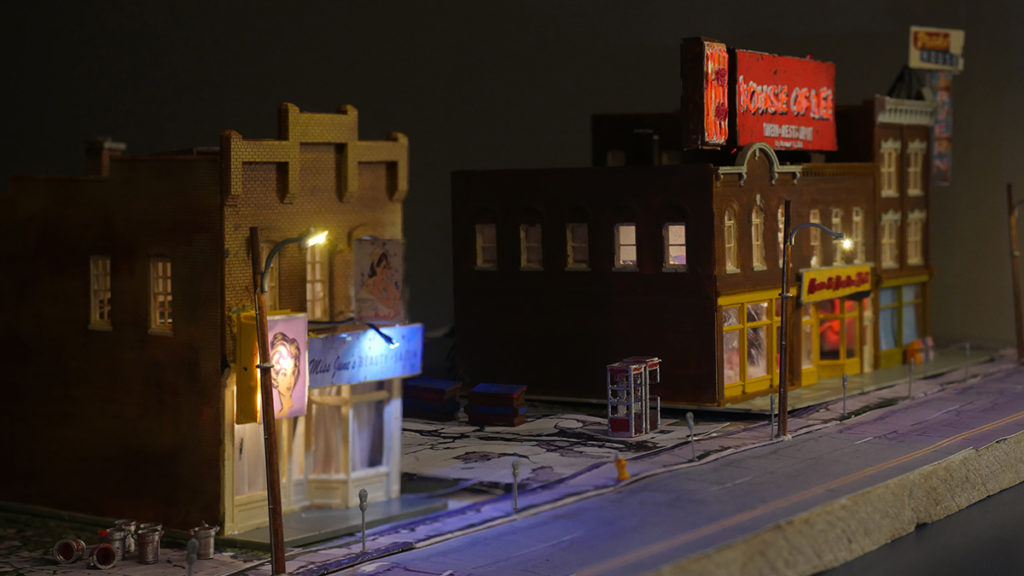
“The working title of the piece is ‘It Don’t Exist’, which is based on graffiti I have passed on Michigan Avenue in Detroit,” Chris explains. “Someone painted this hundreds of times on the sides of buildings and it became a kind of credo for me. Because there is a fleeting aspect to any city scene: a building, a storefront, or neighbourhood, these things are fragile.”
The idea for the project came during the lockdowns of 2020. An instructor of animation and digital media in the Department of Film, Television and Media at the University of Michigan since 2001, Chris continued his teaching online, but at a certain point he became weary of computer screens, keyboards, and all things digital.
“As a result, I was sitting at home, missing some of the urban spaces I would pass through or spend time in,” Chris says. “At the same time, I wanted to work on something that was more tactile. I got a 3D printer, but had no idea what I’d do with it except that it was something to experiment with. I had made model buildings before, from the hobby shop, but nothing like this.”
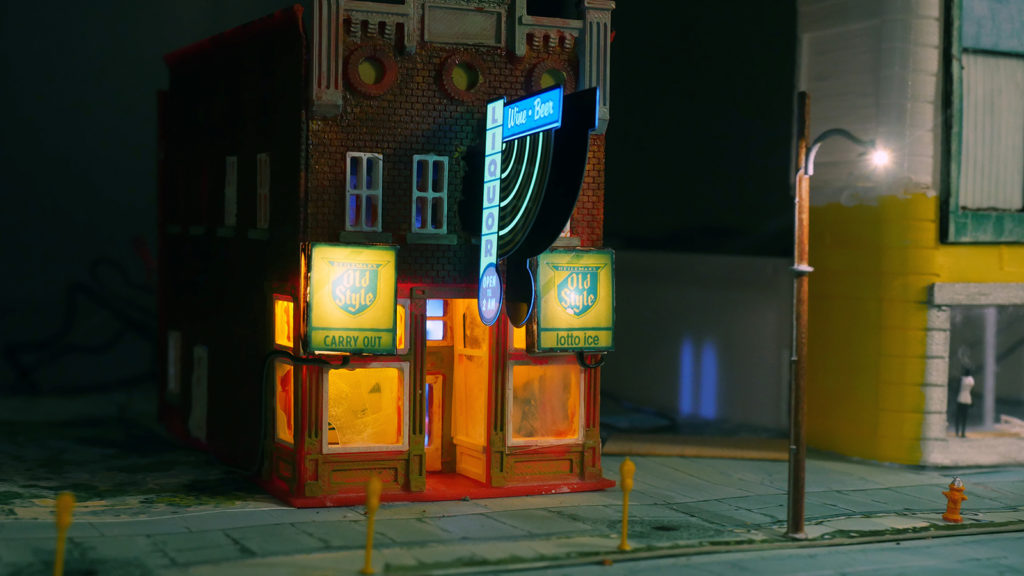
He continues: “I wondered how I could recreate these spaces. I wanted to make these worlds I could inhabit. That was the inspiration: the desire to be in those places and being denied that. The next best thing was making a model of them. The scenes are an amalgamation of memory—you know when you’re dreaming of a place, but it’s not one place, but a combination of many.”
As for his subject matter, Chris says: “For me, I suppose it’s the broken down, the forlorn, the lonely spaces that are more interesting, need more love, they are places that we feel there is a story behind, a story we want to know.”
A few of the pieces are based on actual locations, such as the Richmond Variety Store.
“I photographed the sign and printed out the letters in 3D,” Chris says. “My structure is totally inaccurate, but it echoes the actual place.”
Another piece is a beauty salon Chris based upon an actual one his mother frequented.
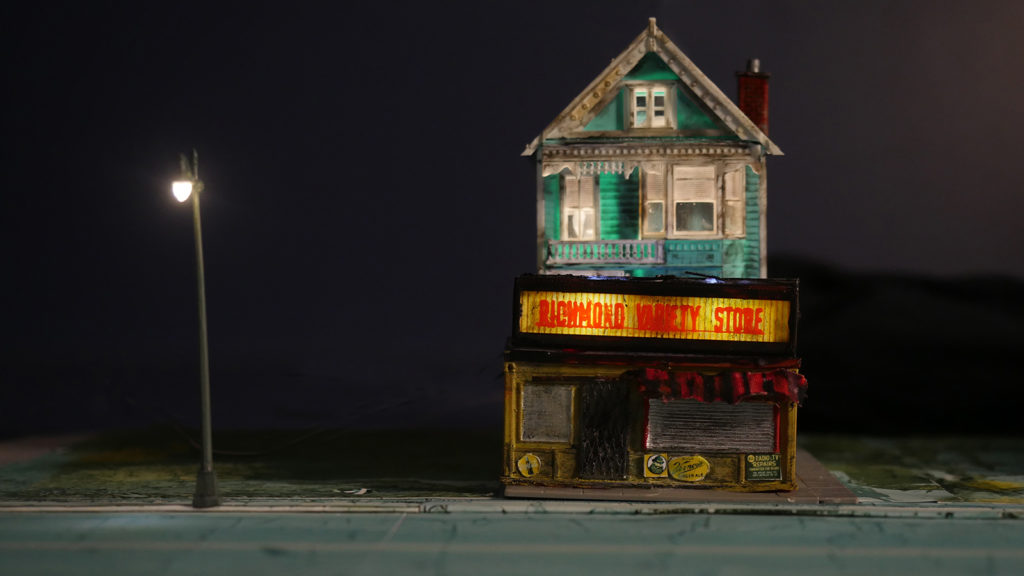
“It was called Miss June Beauty Salon,” he says. “I went through an old business directory and took the clip art from an ad that I found. I created a salon that is probably not the same, just trying to recreate it from my memory. That imperfection is what makes it so beautiful. It’s sort of like, our memories of things become very much like a dream, more lyrical in structure, in essence, not based in prose anymore, but like poems.”
Chris works in the railroad modeling scale known as “HO”—1:87 or 3.5 mm to one foot.
“I don’t have the modeling skills to design in a 3D app,” he says. “Instead, I go and find 3D models in the community of model makers and amalgamate them, preexisting 3D elements that are printed on flat panels. Even the window frames are printed. I sand them, paint them, glue them together.” He laughs. “It was fun to be in league with model railroaders who are way better at what they’re doing than I am! They work at a high level. I am not there. My work is more loose, less adherent to traditions in model railroading, but there is a fascinating community there.”
What makes Chris’ dioramas so striking is the level of detail he achieves in each piece. The buildings are illuminated from within. In one of the buildings—which has three store fronts—the upper floor apartment windows have rumpled venetian blinds. There are dive bars and an adult bookstore, a bus and a train with passengers. There are Chinese food restaurants, a record store, a phone booth and sidewalk newspaper boxes. The storefronts have the rumpled, rusted retractable gates and security grates on the windows. One of the bars has a tiny Hillman’s Old Style beer sign. The larger sign on the same building actually illuminates in an eye-catching pattern.
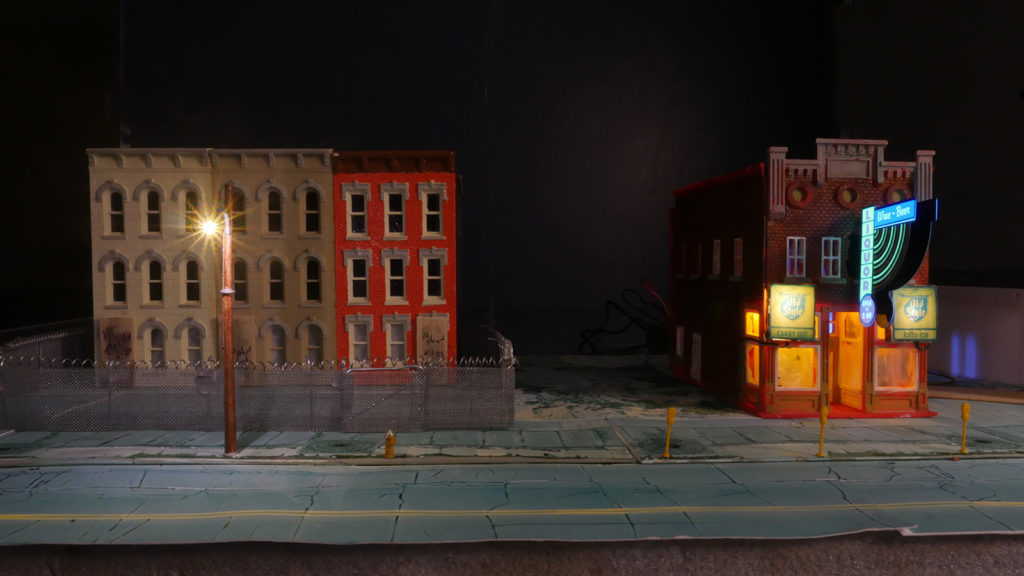
“It’s embracing the idea of zeroing-in on the small poetic banalities there,” Chris says. “There are so many buildings in downtown Detroit that look abandoned, but have these small signs of life, like those venetian blinds. These are also signs of the absence of life that had been there. Part of my reasoning, trying to capture those details… it sometimes gets to where I wonder: ‘Why am I doing this? Who is going to care? This little goofy venetian blind? About the size of my thumb nail…’ But there is something about completing the scene.”
In total, Chris has created three city scenes, which will be shown at AWE beginning November 14. Each is a self-contained world that will be shown together at the gallery. This is one aspect of a show that Chris is curating at AWE. Along with his diorama, he selected pieces from the gallery’s collection for exhibition—in some cases, pieces that may not be familiar even to frequent patrons.
“The work I chose hasn’t seen the light of day for many years,” Chris says. “I based my choices on very early memories of the art gallery: what made me want to become an artist. They share some DNA with my work, all rooted in ideas of place and the city—not just Windsor—but the idea of city spaces that humans live in.”
The diorama is worth checking out. It will be interesting what memories the scenes evoke in people who view it. More information about this show and others at AWE can be found at artwindsoressex.ca.


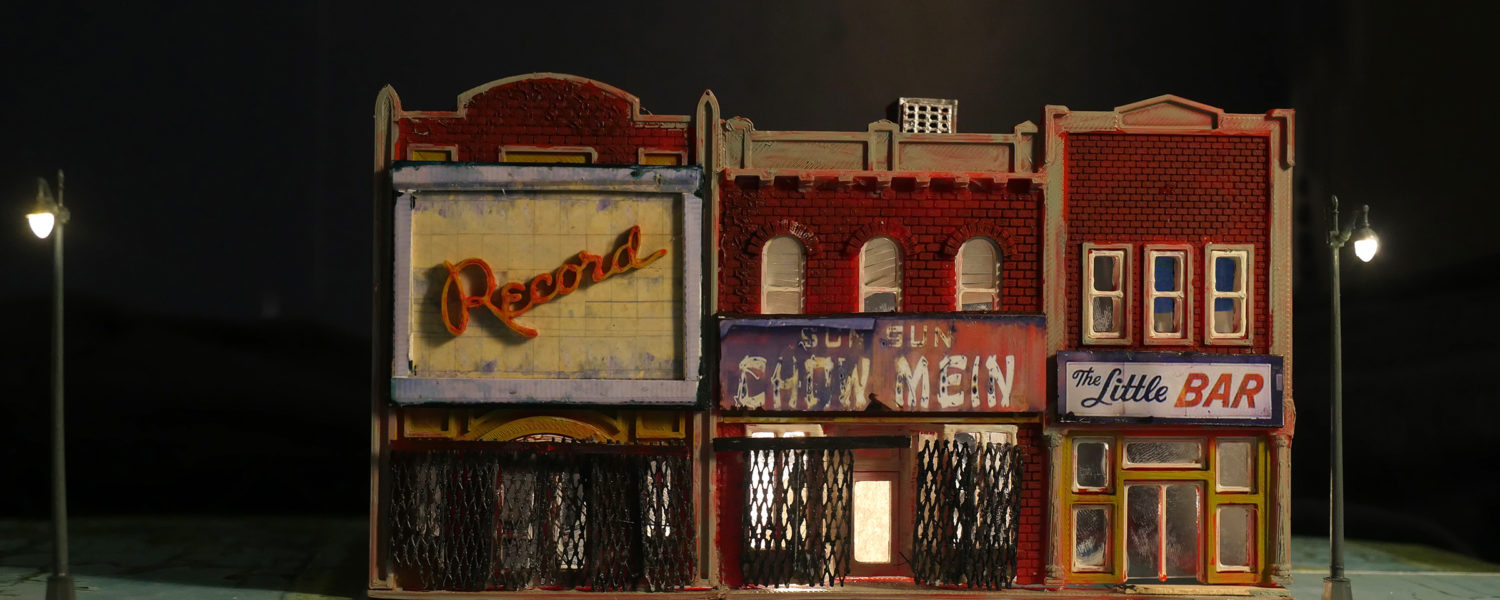

Add comment